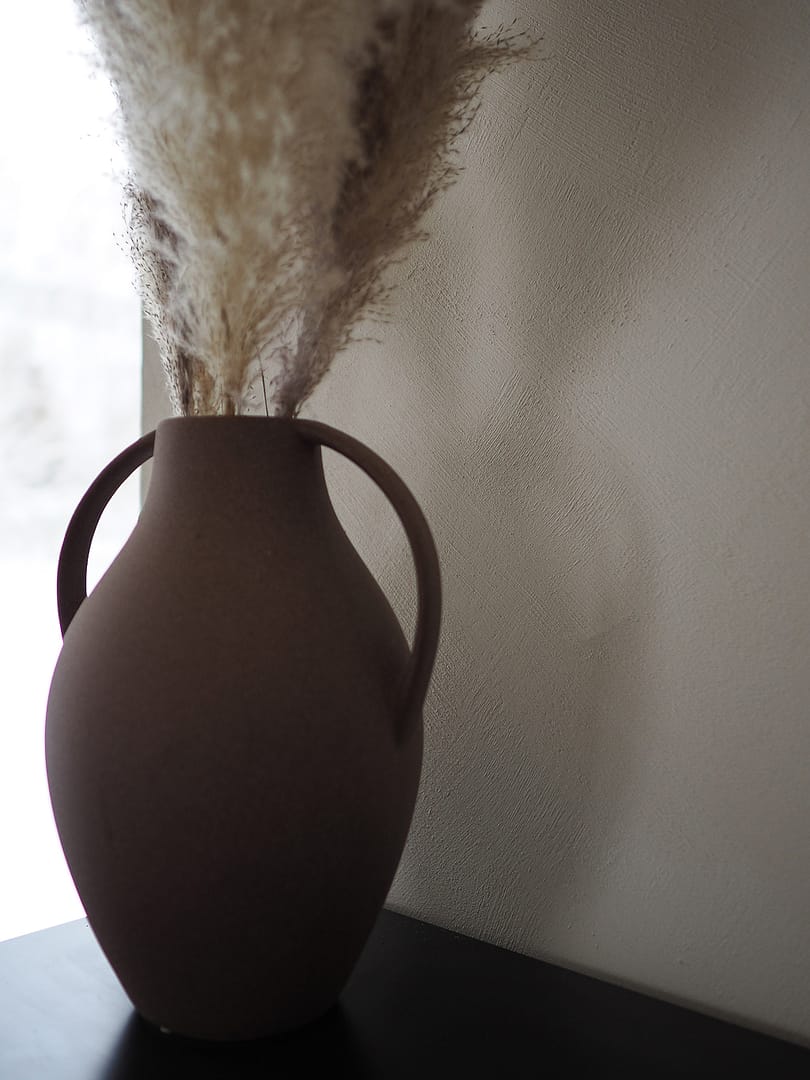
Cleaning
A large proportion of natural binders in plasters and paints are not wet cleanable. Natural materials are valued for their ability to remain open to the movement of water vapour to ensure a good indoor climate and humidity control.
Dry cleaning is the recommended method for most surfaces.
The first thing to try is to remove the dirt with a dry brush. Alternatively, a dry sponge or soft, light eraser can be used.
For tea, coffee, juice and felt-tip pen stains, try 10% hydrogen peroxide.
Grease stains (oil, ice-cream, greasy fingers) penetrate quickly through the surface and cannot usually be removed. At the first opportunity after a stain has formed, you can try to remove it with a cotton swab soaked in acetone.
In the case of damages and scratches, a small amount of repair paint should be taken and diluted with water. Then take as small a quantity of paint as possible onto the brush and dab over the damaged area. Looking carefully, the spot will be obvious later, but a simple brush stroke over it would be even more noticeable. A brush stroke can be used to repair white walls that have not been tinted with pigments. With tinted paints there is generally a difference in tone after drying, especially with lime paints. In the case of extensive damage, a complete repainting of the wall could be considered.
The most moisture-resistant wall finishes in our range are stucco fine plaster and tadelakt, which have a smooth surface and are protected with a gloss soap. Linoleum products for wood surfaces and eico paints, which are suitable for a wide range of surfaces. Avoid contact with acidic and abrasive cleaners to prevent damage to the surface.
